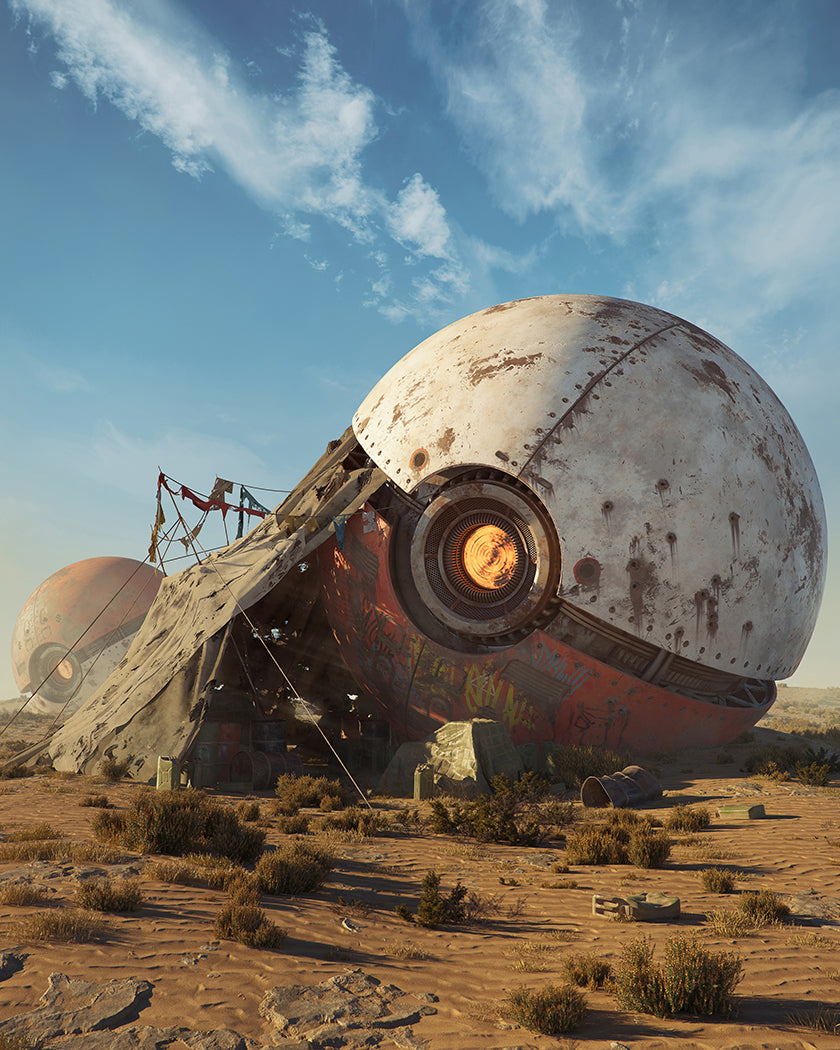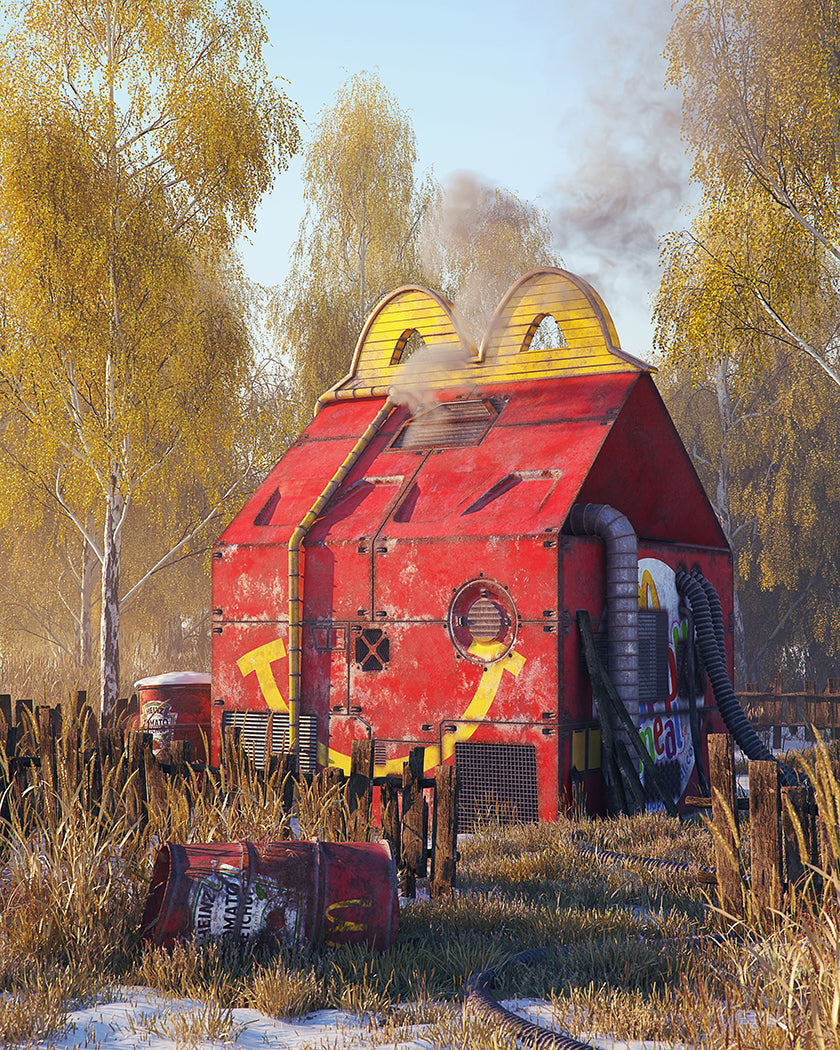Your Cart is Empty
When you buy a book, we plant a tree
Visions of dystopia by Filip Hodas that shows a world where fossilized pop culture icons outlived humanity

One day visual artist Filip Hodas was doing some random cylindrical sci-fi shapes when he realized to himself, "huh, it kinda looks like a can. Wait... What if it was like a giant Coke can? And then I just sort of went with it and expanded into cartoons and games.” It wasn’t a eureka reckoning for the Prague-based animator, but a moment that opened a digital portal into a dystopian vision where humanity no longer appears to exist. Iconic pop culture artifacts, such as a towering Stormtrooper’s helmet are concealed within a jungle, while a monolithic Super Nintendo appears as a desolate reminder of a vanished civilization. One of today’s most prominent figures in the digital art movement, his rendered realities touches on how a symbolic society could one day be erased.

Five years ago Hodas embarked on a solo, self-assigned challenge to create one new 3D renders every day. As is evident, science fiction is a pivotal part of his signature style. In Dreamscapes & Artificial Architecture, his viral ‘Pop Culture Dystopia’ shows rundown concrete structures larger than life, defunct fossils in post-apocalyptic environments. The series became a social media sensation and created a space for him to develop the work further. When asked what spurred these rendered apocalypse style futures, he says, “it wasn't really some sort of calculated decision to do these, to be honest. I've done a few images imagining toys and everyday objects as these vast concrete structures—sort of like when kids turn pencils and forks into missiles and spaceships—which probably laid the foundation of the concept.”
This series came into fruition because he enjoys creating realistic exterior scenes, so he wanted to “come up with some new fun objects to place in them.” It became a gateway for his practice and opened his up to the likes of Adidas, Apple, and Samsung. But his use of forgotten consumer products says a lot about society and how disposable trends and culture are through consumerism. When the time came to selecting particular objects, he said the decision was to choose objects he had a connection to. “Either as a kid or an adult, or something I thought could look cool visually and somehow fit the theme,” he explains. What do the icons and objects say about humankind? There wasn’t a conscious effort here, Hodas didn’t want to provide a formatted commentary. Instead, he prefers to leave the interpretation of his images to the viewer.

The infinite, boundless possibilities of 3D design fascinate him now more than ever. It's a vessel to a different reality of fantastical heights and hallucinogenic-like projections where ideas are guided by dreams instead of the laws of physics. Currently, he doesn’t have a building block of assets for his creations—it's from foundation to finale. Designing these virtual realities from scratch takes time, Hodas acknowledges 3D is extremely slow, but the opportunities are endless.

Manipulations of Mario Kart mushrooms on monumental-proportions are seen sinking into the water, while in a separate work a levitating Space Invader has been formed in such detail that pieces are often labeled realistic. They represent a curious imagination that appeals to many. What seemed like futuristic dystopia when he began the series, instead feels much closer to home in 2020. Change has jumped ahead in the shortest space of time. The past few months have had the power to alter perspectives on dystopias. “I'm not sure if it's directly tied to the pandemic,” he tells us, “but I actually did have a bunch of new ideas for a new part of the dystopia series!” While walking around the empty streets of Prague he began to notice interesting corners with decaying buildings, something he might have missed before. Looking at the future, he says, “I'd like to incorporate it into city settings like these and push my building texturing workflow. It could be a nice change from all the forests and jungles.”
See more work from Hodas and discover other pioneering individuals behind the movement through Dreamscapes & Artificial Architecture.